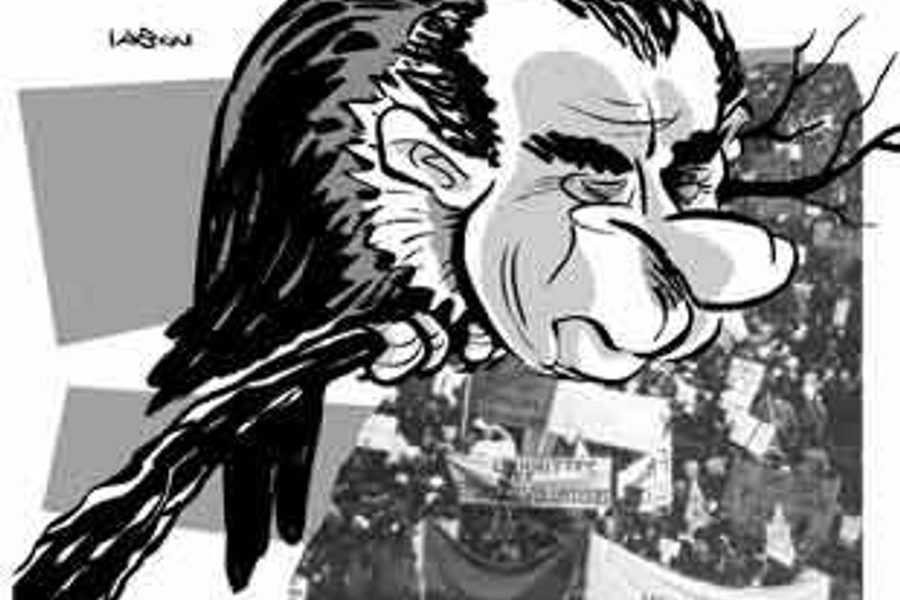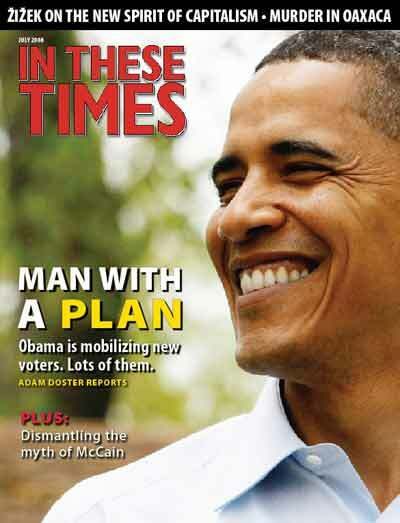
After the first-ever televised presidential debate between Vice President Richard Nixon and Sen. John F. Kennedy in 1960, a survey in Philadelphia famously found that TV viewers deemed Kennedy the winner, while radio listeners favored Nixon. In reality, the poll in question was shoddy and unreliable (even if Nixon’s sweaty, unshaven mug had looked gruesome on the small screen). But that didn’t matter to Nixon. The lesson he gleaned from defeat that year was that optics were everything, that he had to be far more ruthless about controlling his image from there on out.
And so he was. While staging his big political comeback in the 1968 Republican primary, Nixon scripted every campaign event, handpicking his audiences with the help of 28-year-old media strategist (and future Fox News head) Roger Ailes – and trounced his chief rival, Gov. George Romney, who naively believed that voters might like a little off-the-cuff candor. Later, Nixon would become the first president to hire a full-time communications director and told his economic advisers to work closely with public relations guru William Safire. Message first, policy second.
Still, Nixon’s mastery of the shiny surface of politics would’ve taken him only so far if he hadn’t also possessed another, less-noticed skill – a gift for reading the darker, subterranean moods of American voters. And it’s that aspect of Nixon that sits at the center of journalist Rick Perlstein’s Nixonland (Scribner), a rich new history of the 1960s that tries to pinpoint the origins of America’s rightward drift over the last four decades.
Once upon a time – say, late 1965 – it was possible to believe that American conservatism was two sweeps of the broom away from the dustbin of history. President Lyndon Johnson had just vaporized Rep. Barry Goldwater en route to re-election, and scores of new liberal Democrats had swept into Congress to enforce racial equality, expand healthcare and declare war on poverty.
Few pundits at the time realized, however, that beneath the surface, all the social upheavals of the ’60s were making vast swaths of Middle America susceptible to a new brand of right-wing cultural populism. It was Nixon, master of symbolism, reader of undercurrents, who knew exactly how to exploit this lurking resentment – and, in the process, redraw the nation’s electoral map.
Histories of the ’60s are hardly in short supply – the Watts riots, the Summer of Love, Attica, Kent State … familiar events, all. Even so, Nixonland manages to distinguish itself brilliantly. Perlstein’s talent for scene-setting, his cinematic style, serves to illustrate how the turmoil of the era would have actually looked and felt to the average American – showing, rather than just explaining, why so many in the “silent majority” became alienated from the reigning liberal consensus.
In a gripping chapter on the 1968 Democratic convention in Chicago, Perlstein mines old newsreels to offer a frame-by-frame reconstruction of what TV viewers would have seen from their living rooms: New York delegates waving “STOP THE WAR” signs; demonstrators in Grant Park chanting “Kill the pigs”; newscaster David Brinkley sitting agog while police stormed the convention hall.
Perlstein also punctures many long-standing myths about the decade, such as the notion that disgruntled lefties caused all the mayhem of the ’60s. Far from it: Right-wing Cuban exiles were firebombing more than a dozen locations in the summer of ‘68. Minutemen vigilantes tried to burn down a pacifist farm in Connecticut, ending in a shootout with the police. In a ghastly account of the 1967 Newark riots, Perlstein writes how the local police gunned down unarmed civilians in the streets, spilling more blood than the rioters themselves.
Even so, a Harris poll the following year found that most Americans – especially the low-income whites who had formed the backbone of the New Deal coalition – blamed the violence on blacks and the all-too-indulgent “long hairs” ruling the country.
In stepped Nixon – himself a lifelong “serial collector of resentments,” as Perlstein calls him – who knew how to ride the reactionary swell. He had watched Ronald Reagan get elected governor of California by railing nonstop against Berkeley lefties. And he saw that the GOP could benefit from white rage over busing and open-housing policies, and that the one-third of AFL-CIO members who quietly supported Gov. George Wallace’s race-baiting candidacy could be his instead. (Nixon’s 1968 victory was assured when South Carolina’s Sen. Strom Thurmond agreed to steer Southerners away from Wallace and toward the GOP; as president, Nixon repaid the favor by appointing right-wing judges and bogging down integration efforts.)
Liberal elites and the press thought Nixon tacky and uncouth. But, as the old William Blake aphorism has it, the tigers of wrath were wiser than the horses of instruction. Behind the scenes, Kevin Phillips, a young Nixon strategist, convinced the boss that Republicans could piggyback on popular resentment of cultural elites to create a new electoral majority. It was perfect: Nixon, after all, couldn’t veer left on economics to win over the white working class – his corporate paymasters wouldn’t hear of it. But he could woo them on social issues. Noted one aide: “Patriotic themes to counter depression will get response from unemployed.”
Perlstein points to a New York Times photo of a stockbroker and pipe-fitter joining forces to clobber a hippie at an antiwar rally with – yes – an American flag. That was Nixon’s vision for an emerging Republican majority. (Indeed, Nixon would surely approve of modern-day Republicans who prefer to harp on flag pins and Sen. Barack Obama’s former pastor than to dwell on economic affairs.)
But Nixonland also provides evidence that this strategy doesn’t always work, that coalitions built purely on resentment have their limits. In the 1970 elections, Nixon waged an all-out anti-hippie campaign that, he hoped, would finally allow the GOP to retake Congress. Vice President Spiro Agnew toured the country foaming over the “parasites of passion” in the antiwar movement. But it failed miserably, as voters were much too worried about economic issues to care. The New York Times interviewed a Teamster who thought the National Guard was “100 percent right in Kent State” but was still voting Democratic because of the slowdown in the construction industry.
Nixon, of course, had better luck in 1972. But here, too, it’s hard to sort out how much his victory owed to the cultural rift he created, as opposed to other factors. Part of what makes Nixonland so compelling is that it offers support for any number of readings. Yes, Nixon won over AFL-CIO leader George Meany, who despised the peaceniks, postgrads and feminists within the Democratic Party. But McGovern himself was also a mind-bogglingly inept candidate, who, as Perlstein reminds us, once cut an ad in which he actually berated a black worker worried about layoffs in the defense industry. And McGovern was the Democratic nominee partly because Nixon’s stream of dirty tricks had flushed stronger candidates like Sen. Edward Muskie out of the race.
Nixon, moreover, benefited massively from his ability to lie through his teeth without reprisal – as when he claimed he was ending the war even as he ramped up his depraved bombing campaign against Cambodia and North Vietnam. For their part, mainstream liberals in the ’70s were often absurdly high-minded in response, believing voters would surely see through Nixon’s falsehoods. The press, meanwhile, was cowed: When news anchor Walter Cronkite tried to do a segment on the Watergate scandal, his bosses at CBS dialed it down after getting mau-maued by Nixon’s goons.
All told, Perlstein has written an endlessly illuminating account of how, exactly, Nixon teased out a cultural divide in American life that persists to this day – a wound that Republicans keep jabbing in order to win. But elections are always multifaceted affairs, and observers can rarely agree on just why this or that party prevailed. The rise of conservatism in the United States owed to any number of factors: labor’s decline, business’ growing ability to act as a unified class, the birth of right-wing media, the fact that Republicans promised solutions for problems like crime and stagflation that had left Democrats helpless. It’s a messy story.
Still, even if Nixonland tells only part of that tale, it’s a crucial part, and Perlstein tells it so well – and so vividly – that his book is utterly essential for understanding the modern American political landscape.

I hope you found this article important. Before you leave, I want to ask you to consider supporting our work with a donation. In These Times needs readers like you to help sustain our mission. We don’t depend on—or want—corporate advertising or deep-pocketed billionaires to fund our journalism. We’re supported by you, the reader, so we can focus on covering the issues that matter most to the progressive movement without fear or compromise.
Our work isn’t hidden behind a paywall because of people like you who support our journalism. We want to keep it that way. If you value the work we do and the movements we cover, please consider donating to In These Times.





